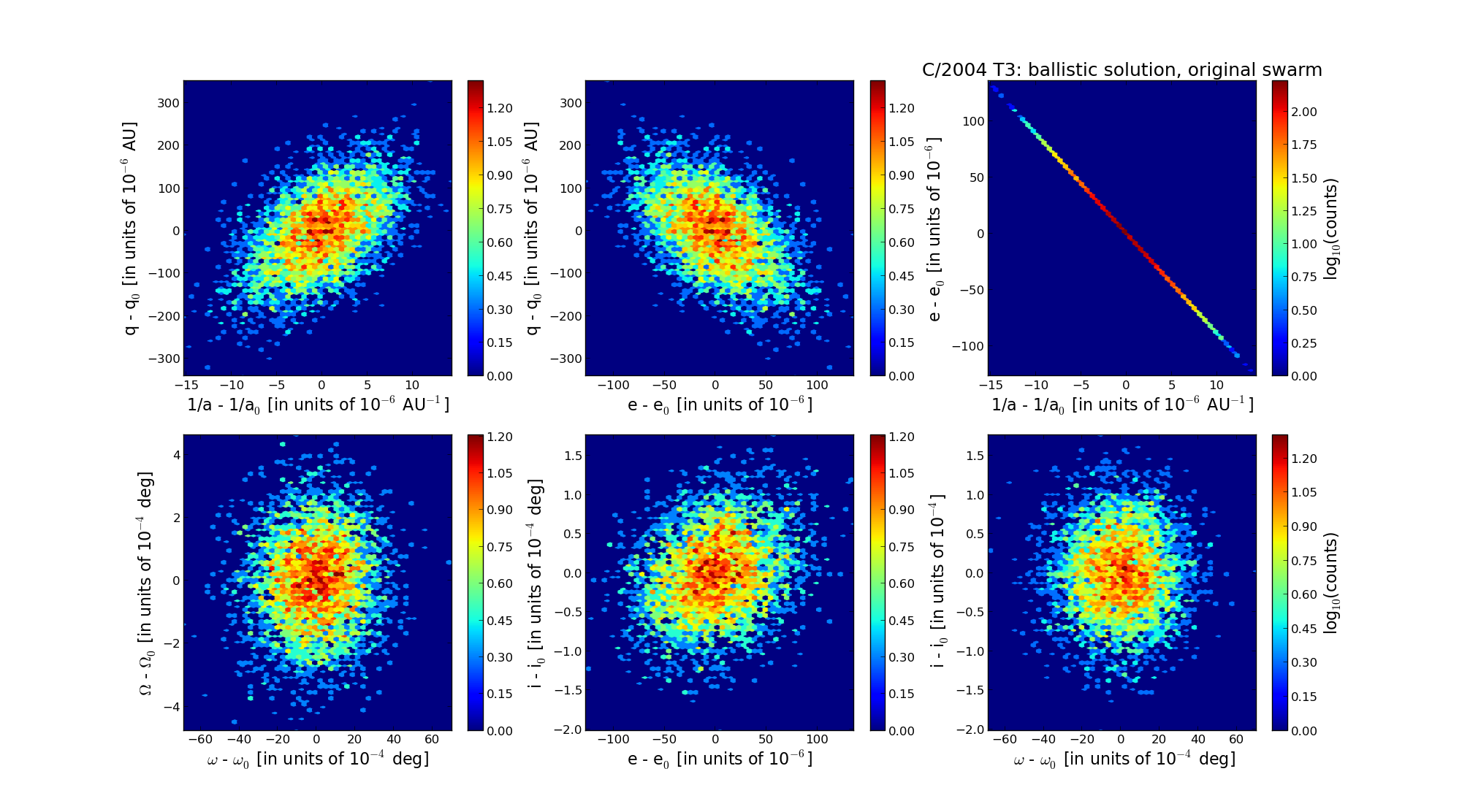| Solar System Dynamics & Planetology Group |
 |
C/2004 T3 Siding Spring |  |
| Solar System Dynamics & Planetology Group |
 |
C/2004 T3 Siding Spring |  |
| number of observations | 109 |
| number of residuals | 209 |
| data interval | 2004 Oct. 12 — 2006 Jan. 31 |
| rms [arcsec] | 0.44 |
| orbit quality class | 1a |
| Epoch (TT) | 20030501.0 | = JD 2452760.5 |
| time of perihelion passage (TT) | 20030415.234572 | ± 0.024763 |
| perihelion distance | 8.86450665 | ± 0.00008577 |
| eccentricity | 0.99749028 | ± 0.00003702 |
| argument of perihelion [deg] | 259.677146 | ± 0.001656 |
| longitude of the ascending node [deg] | 50.392989 | ± 0.000134 |
| inclination [deg] | 71.959969 | ± 0.000050 |
| inverse semimajor axis [10-6 au-1] | 283.12 | ± 4.17 |

| Epoch (TT) | 16901227 | |
| time of perihelion passage (TT) | 20030414.895405 | ± 0.024434 |
| perihelion distance | 8.86554953 | ± 0.00008464 |
| eccentricity | 0.99959502 | ± 0.00003724 |
| argument of perihelion [deg] | 259.686943 | ± 0.001643 |
| longitude of the ascending node [deg] | 50.389055 | ± 0.000134 |
| inclination [deg] | 71.923588 | ± 0.000050 |
| inverse semimajor axis [10-6 au-1] | 45.68 | ± 4.20 |
| Epoch (TT) | 23151122 | |
| time of perihelion passage (TT) | 20030416.040415 | ± 0.024562 |
| perihelion distance | 8.86447368 | ± 0.00008464 |
| eccentricity | 0.99933897 | ± 0.00003725 |
| argument of perihelion [deg] | 259.687490 | ± 0.001642 |
| longitude of the ascending node [deg] | 50.384035 | ± 0.000134 |
| inclination [deg] | 71.931989 | ± 0.000050 |
| inverse semimajor axis [10-6 au-1] | 74.57 | ± 4.20 |